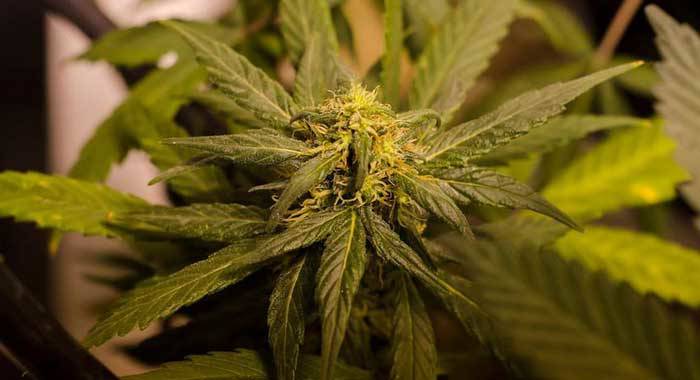By *Machel Emanuel
Jamaica has developed a reputation internationally for the production of cannabis inflorescence (buds, flowers) and a wealth of indigenous knowledge and technical competence as it pertains to the cultivation and management of the horticultural commodity.
The amended Dangerous Drugs Act 2015 stipulates that hemp is classified as any Cannabis sativa L plant, or any part thereof, that possesses less than one per cent THC. However, this creates a level of ambiguity within the law, as there is a remarkable difference between craft hemp (cannabis flowers grown for high CBD but low THC, less than one per cent) as compared to industrial hemp grown for its biomass, in particular its fibres and seeds.
Therefore, the production of industrial hemp in Jamaica poses a serious threat to the integrity and sustainable development of the Jamaica medical cannabis industry. There is a difference between the genetic nature of industrial hemp when compared to ganja. According to research published by Datwyler and Weiblen 2006, the analysis of molecular variance indicates that 27.2 per cent of the genetic variation is attributable to differences between ganja and industrial hemp lines, while 20.9 per cent can be attributed to differences among hemp varieties.=
Industrial hemp has always been traditionally cultivated in temperate climates. China accounts for 70 per cent of the world’s production, followed by France, United States of America, Canada and Chile. The average industrial hemp farm is 500 hectares, where the production, harvesting and processing are all mechanised. The end product of the two commodities, industrial hemp and ganja, are different and have unique value chains. Hemp is all about the production of biomass, while ganja is about the production of the trichome glands (produces the medical and therapeutic value). Therefore, the methods of production and modus operandi are different to achieve the desired output. Over centuries, there has been selective breeding for morphological, physiological and phytochemical traits to maximise the output of these cannabis cultivars for biomass and high-density trichome inflorescences.
CROSS-FERTILE
Cannabis sativa L is a dioecious (male/female) plant. The production of ganja (inclusive of craft hemp) only takes advantage of the female inflorescences which possess the highest concentrations of the trichome glands, while on the other hand, industrial hemp does not need to differentiate between the two in its production. All members of the genus cannabis are cross-fertile, the pollen from flowering male plants is wind-borne, making cross-fertilisation extremely common. A single male cannabis plant can produce 350,000 male spores during its sexually mature stage. These male spores can survive for 30 hours naturally and has the possibility to traverse a 30-mile radius under normal conditions. Therefore, the possibility arises for cross-pollination to occur between industrial hemp, the householders who can grow five plants, sacramental growers, traditional growers, researchers, plant breeders and the medical licensed producers. For Jamaica, situated in the hurricane belt, and with the advent of climate change, more frequent and larger storms are expected. The possibility of fertile, male industrial hemp spores travelling the wind currents could affect the genetic integrity of all ganja currently grown on the island, which will, in turn, compromise the germplasm stock and risks the possibility of reducing the nostalgia value of the cannabis industry in Jamaica.
Cultivating temperate varieties within Jamaica’s tropical climate – with higher temperatures, levels of humidity and shorter diurnal periods (hours of sunlight) – will see a high proportion of female industrial hemp plants experiencing stressful conditions, which will see the female plants becoming hermaphrodites and producing fertile male spores. These spores being produced by hermaphrodites will now have the possibility to pollinate any female pistils within its radius and produce seeds with hermaphrodite genes embedded in its genome. Hermaphrodite genes are extremely difficult to remove from cultivars via traditional breeding techniques. The diurnal period in Jamaica will not allow for comparable yields per acre as compared to the longer days experienced in temperate climates.
The policymakers should carefully assess the feasibility and practicality of cultivating industrial hemp in Jamaica, as it could reduce the ability to participate forcefully within the global business of cannabis, while maintaining its reputation, consequently subject ourselves to the possibility of importing ganja and its value-added products from the United States and Canada, in the near future, to satisfy the needs of our local populace.
*Machel Emanuel, BSc MSc PhD (horticulturist/crop scientist), Dep-artment of Life Sciences, Faculty of Science and Technology, University of the West Indies, Mona campus. Email: [email protected]
The opinions presented in this content belong to the author and may not necessarily reflect the perspectives or editorial stance of iWitness News. Opinion pieces can be submitted to [email protected].







Good points which are all well know by various experts which illustrate the ubiquitous, highly adaptive, and quick mutation qualities of the Cannabis plant and its large number of varieties.
There is a ready solution, namely the one adopted by industrial-scale planters in temperate environments: indoor, highly regulated production where all the factors mentioned by Dr. Emanuel can be controlled.
This is yet another reason why our attempts to enter the export medical and recreational cannabis markets are bound to fail even in the absence of also try to grow industrial hemp.
The comments made by the noted Professor is one sided and short sighted. One must first balance the benefits of both species of the Cannabis plant and determine which are the most beneficial to the economic balance of Jamaica. The determine that the USA is a major producer of Industrial Hemp by-products is incorrect as most of the Hemp products consumed in the USA are the result of Canadian imports.
There is more to the differences between Cannabis Sativa (Industrial Hemp) and Cannabis Indica ( Ganja) that plain scientific rhetoric. Dr. Emanuel’s comments are based on 2006 data which is sorely outdated